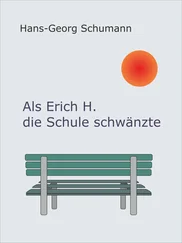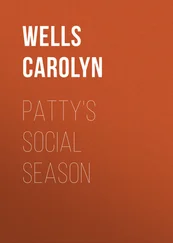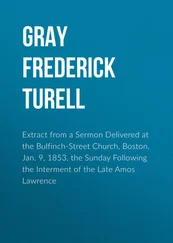Amos Wells - Sunday-School Success
Здесь есть возможность читать онлайн «Amos Wells - Sunday-School Success» — ознакомительный отрывок электронной книги совершенно бесплатно, а после прочтения отрывка купить полную версию. В некоторых случаях можно слушать аудио, скачать через торрент в формате fb2 и присутствует краткое содержание. Жанр: foreign_prose, foreign_religion, Философия, foreign_psychology, foreign_antique, на английском языке. Описание произведения, (предисловие) а так же отзывы посетителей доступны на портале библиотеки ЛибКат.
- Название:Sunday-School Success
- Автор:
- Жанр:
- Год:неизвестен
- ISBN:нет данных
- Рейтинг книги:5 / 5. Голосов: 1
-
Избранное:Добавить в избранное
- Отзывы:
-
Ваша оценка:
- 100
- 1
- 2
- 3
- 4
- 5
Sunday-School Success: краткое содержание, описание и аннотация
Предлагаем к чтению аннотацию, описание, краткое содержание или предисловие (зависит от того, что написал сам автор книги «Sunday-School Success»). Если вы не нашли необходимую информацию о книге — напишите в комментариях, мы постараемся отыскать её.
Sunday-School Success — читать онлайн ознакомительный отрывок
Ниже представлен текст книги, разбитый по страницам. Система сохранения места последней прочитанной страницы, позволяет с удобством читать онлайн бесплатно книгу «Sunday-School Success», без необходимости каждый раз заново искать на чём Вы остановились. Поставьте закладку, и сможете в любой момент перейти на страницу, на которой закончили чтение.
Интервал:
Закладка:
Proceeding in this way, I soon have a line under every word requiring explanation, every hint of a strange custom, every reference to other parts of the Scriptures, every point for practical application. I have underscored words representative of all the thoughts that especially appeal to me as fitting the needs of my class.
When this has been done, it is time to make my outline. If my study has suggested to me an outline of my own, that will be better for me than any other man's. The outline is the plan of campaign, the thing I wish especially to emphasize, and under it, ranged in order, the points of minor importance. I write this outline on the margin of my lesson text.
Having decided on the outline, I go over my underscorings again, doubly or trebly underscoring the words that have reference to the thought around which I intend to center the entire lesson—the thought that is to be the lesson's enduring monument in the minds and lives of my scholars.
Now I am ready for review. I go over the whole, starting with the detached words jotted down at the beginning,—"author," "time," "place," etc.,—and consider all the underscorings, railroadings, and curved lines, stopping at each to frame a question of my own and to make sure of my best answer. I do this in precisely the order in which I intend to take up these points in the class. Not the smallest part of my work at this juncture is to simplify, by erasing the underscorings where the questions may be spared without interfering with my main purpose; and then I review once more in the same way, to confirm my grasp on the lesson plan.
By this time every underscoring is luminous, and my page of lesson text has become a graphic picture of the lesson I am to teach, a true chart for my voyage.
Do you think the process too tedious, brother teacher? It is not a whit too thorough when you remember the infinite interests involved; and every repetition of it will increase your skill, and the rapidity of your work. I have used this method for years, with various classes, and know it to be practical, pleasant, and profitable. Try it, and see.
Chapter VII
The Value of a Monotessaron
Far above concordance, Bible index, Bible dictionary, commentary, I count the monotessaron the very best help to Bible study. The monotessaron, it might be parenthetically remarked for the benefit of the lexicon-lazy folk, is a harmony of the four Gospels, so arranged as to make one continuous and complete story, in Scripture words alone.
"Fie!" says one reviewer of a recent monotessaron, "we have no use for such compilations. God gave us the gospel in four separate books. He could have put it in one if it had been best that way." This is an argument which would make a heretic of the locomotive, printing-press, and any other rearrangement of God-given matter. Having the four Gospels, we may have one. If God had given us only one, we could not have the four.
Christians will always read the four separate Gospels, in order to see Christ from four separate points of view, through four separate individualities, that their differences as well as their agreements may make the picture stand out more vividly, much as the two diverse flat portions of a stereoscope view combine into perfect perspective and reality.
But this combining is necessary; and it may be truly said that what we lose, in reading the monotessaron, of the personality of John or Luke, we more than gain in the increased vividness of the person of Christ. Speaking for one, I may say that through my first acquaintance with a monotessaron that matchless life has shone upon me with an entire splendor of beauty and majesty before unimagined.
Never before was the life a whole, like Washington's or Lincoln's. The imprisonment of John was an event in the fourteenth chapter of one Gospel, the sixth of another, the third of the rest; the call of Matthew now in the ninth chapter, now the second, now the fifth; the parable of the sower in the thirteenth, fourth, and eighth chapters. Nothing was in a clear, definite relation to the single life. The talk with Nicodemus is now no longer to me an event of John 3, but of the beginning of the first year of Christ's ministry, at the Passover. No longer would I be puzzled to tell which came first, the healing of the nobleman's son of John 4, or the stilling of the tempest of Mark 4, but place the last a year later.
Not only has the narrative become clear and orderly, not only has the wonderful history parted itself into the true and helpful time-divisions so diverse from the confusing chapters, but the places now stand out, and journeys are distinct. Take any diatessaron—that is, any parallel arrangement of the four Gospels—and note the wide blanks in each book, filled out by others, so that between contiguous verses of one Gospel must be inserted whole chapters of another, complete journeys, many deeds and sayings, the location in the meantime greatly changing. A geologist will think of the helpful triumph of taking from the full rock record here to fill out the unconformable strata there, until a geological column is built up.
A further inestimable advantage is the appreciation of surroundings. What light is cast, for example, on the story of Lazarus in John by its insertion in Luke! The contact of these parted elements of the gospel story sometimes rouses a current of thrilling thoughts, making a veritable electric battery of the monotessaron.
Still another priceless gain is an understanding of proportions. Matthew's parallels, Mark's deeds, Luke's miracles and parables, John's sermons—in reading any of the four Gospels peculiar elements come into prominence, and we are left with no idea of the relative proportion of these elements in the one life. What emphasis did Christ place on the doctrinal, and what on the practical? Just how much of his teaching concerned himself and his character? What space in the New Testament is occupied by miracles? Just what part of Christ's preaching was parabolic? What is the prominence of missionary effort and proselytism? How much is there of consolation, and how much of stern rebuke? What measure of promise? What quantum of theology? What share of ethics?
These and scores of other questions which occur at once to every Christian thinker, the monotessaron makes possible of easy and rapid answer. Indeed, almost its chief advantage is the spur it affords to the spirit of investigation. Those who are statistically inclined can even get at precise ratios by the exact process of counting lines.
Well, that is my experience of the value of a monotessaron. It has given the life and person of Christ marvelous vividness, setting facts in their due order, location, relations, and proportions, while the facility it affords is constant inspiration to fresh, delightful study. This is the experience of thousands, and yet I am sure that among the readers of this book will be many who are yet unacquainted with this Bible help. Not only every Sunday-school teacher, but every Bible scholar, should own one.
The single year in which I wrote this chapter saw the publication, in quick succession, of four of these monotessarons, one the improved edition of an older work. Each of these four has its peculiar features of value, and I have compared them carefully to get at their characteristics.
1. "The Interwoven Gospels." Rev. William Pittenger. (5 × 7½ inches, pp. 245. New York: John B. Alden. Price, 90 cents.) Five plates give clearly the various journeys. The Gospel fullest in each event is taken as the standard, and its verse-numberings given, while sentences and phrases interwoven from other Gospels are preceded by an inconspicuous letter, to designate the book from which they come. This seems to me the ideal plan. There is a table for finding in the monotessaron any verse of any Gospel. There is a very distinct synopsis. The time is indicated only at the heads of the five divisions of the story. The place is given at the head of each one of the one hundred and seventy-one sections. The index is scant. The typography is excellent. The American Revised Version is used.
Читать дальшеИнтервал:
Закладка:
Похожие книги на «Sunday-School Success»
Представляем Вашему вниманию похожие книги на «Sunday-School Success» списком для выбора. Мы отобрали схожую по названию и смыслу литературу в надежде предоставить читателям больше вариантов отыскать новые, интересные, ещё непрочитанные произведения.
Обсуждение, отзывы о книге «Sunday-School Success» и просто собственные мнения читателей. Оставьте ваши комментарии, напишите, что Вы думаете о произведении, его смысле или главных героях. Укажите что конкретно понравилось, а что нет, и почему Вы так считаете.












